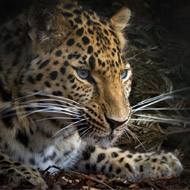
Hopes that Amur leopards could be reintroduced to Russia in the future have been raised after the birth of a cub at RZSS Highland Wildlife Park.
RZSS Highland Wildlife Park is home to the world’s only purpose-built Amur leopard habitat which is not on show to the public. It has been designed solely to breed Amur leopards and maximise their potential of being released into the wild.
Head of living collections Douglas Richardson hailed the birth as ‘incredibly exciting’, adding that it shows the vital role conservation breeding programmes have in protecting threatened species.
Image (C) RZSS Highland Wildlife Park.



 The RCVS has announced a new version of its 1CPD mobile app, with enhanced features for veterinary surgeons and veterinary nurses to record their continuing professional development.
The RCVS has announced a new version of its 1CPD mobile app, with enhanced features for veterinary surgeons and veterinary nurses to record their continuing professional development.